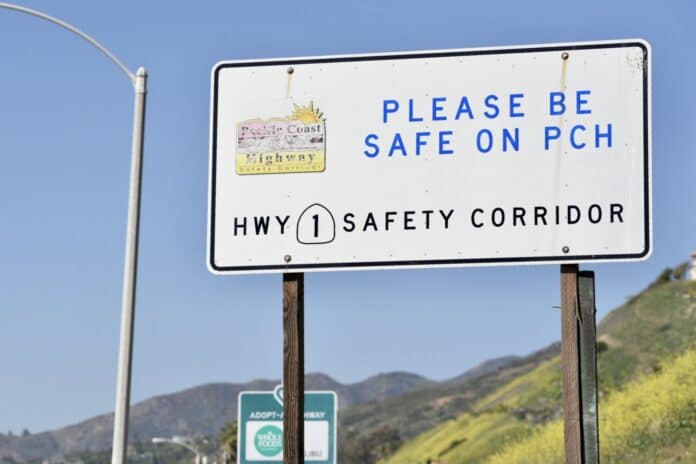Bike and pedestrian safety is focus for Caltrans
A seven-and-a-half mile stretch of Pacific Coast Highway north of Malibu in Ventura County is about to be redesigned with safety and climate change adaption in mind. Caltrans held a hybrid planning meeting Feb. 2 to announce its goals in an infrastructure community meeting.
Although just in the planning phase, the safety measures can’t come soon enough because the stretch of PCH that will be reconfigured with bike lanes is currently one of the deadliest.
“If you look at all the crashes in Los Angeles and Ventura Counties on the PCH, about 21 percent of those total crashes are happening in this seven-and-a-half-mile stretch,” said Ashley Haire, an engineer with Alta Planning and Design, hired by Caltrans for the project. “We know that there is a deep crash history here that we are taking in to account.”
Alta is a planning and engineering design firm that specializes in bicycle and pedestrian modes of transportation.
Haire pointed out that some of the accidents are vehicular crashes and others are crashes involving bicyclists or pedestrians.
“That is something we’re looking at closely for this project,” she said. “Where are these problem points and are there things that we can do in recommending features that are coming out of this project to mitigate some of that crash risk?”
After analyzing data, the engineer stated, “There are a variety of different types of bicyclists. We have some long-haul tourists that are going through this area. We also have some folks who are good at riding in constrained spaces and are comfortable mixing somewhat with higher-speed vehicles. But overall this is a pretty scary section of road to ride a bike on. It’s not comfortable. Nobody’s out there taking their kids for rides.”
Some areas of that stretch of PCH have shoulders, and in other places there are none. Caltrans said there is little pedestrian activity on that stretch of roadway.
“You’ve probably not seen a lot of folks out there walking just for fun,” Haire said. “A lot of the pedestrian activity is actually folks who have driven out there, gotten out of their car, and are pulling their surfboards or picnic materials out of their vehicles. A lot of the parking activity that we see is not your typical turnover parking that you see in town. These are folks who are parking for long periods of time. They may be having a cookout or milling around their vehicle and then walking some distance to the beach access.”
The engineering firm is getting federal guidance on what type of bikeways to implement based on vehicle speed. A separated bike lane is suggested over a shared lane on highways where vehicular speed generally exceeds 35 mph.
“There’s really not a section of this project where people are only driving 35mph,” Haire stated. “We really think it would be important to have a separated facility out here, one that separates bicyclists and pedestrians from vehicular traffic, provides a safe barrier between those uses, and really gets folks out of harm’s way.”
Caltrans is seeking recommendations on how to move forward on the planning side while also integrating larger climate resilience measures.
If there is no room for a shared bike path, engineers are considering building a raised sea wall as an option. The use of natural materials may be favored in construction for stabilizing cliffs or shorelines connected with the project even though one engineer commented that the use of natural materials may not have the longevity of other man-made materials over time.
Project engineers are taking into consideration landslides, coastal flooding, coastal erosion, sea level rise, and even tsunamis during their planning phase to accommodate bicyclists and pedestrians.
In identifying planning-level concept strategies to address long-term climate change impacts all while improving bicycle and pedestrian safety and accessibility, Caltrans says its goals are also to protect beach access, habitat enhancement and ecological resilience over the infrastructure’s lifespan.
“It’s looking at coastal resilience and how Caltrans can take a more proactive approach to not just repair things but also transportation safety along the corridor with a focus on bike and pedestrian safety,” commented Paul Moore of ARUP Consultants. “Parts of this corridor are a lot less safe than other comparable corridors throughout the state. It’s a problem people know and have seen. The nature and habitat is part the allure here. We want to make sure that’s protected and preserved.”
Public comment can be sent to Stella.Yip@arup.com through Feb. 10, 2023.


